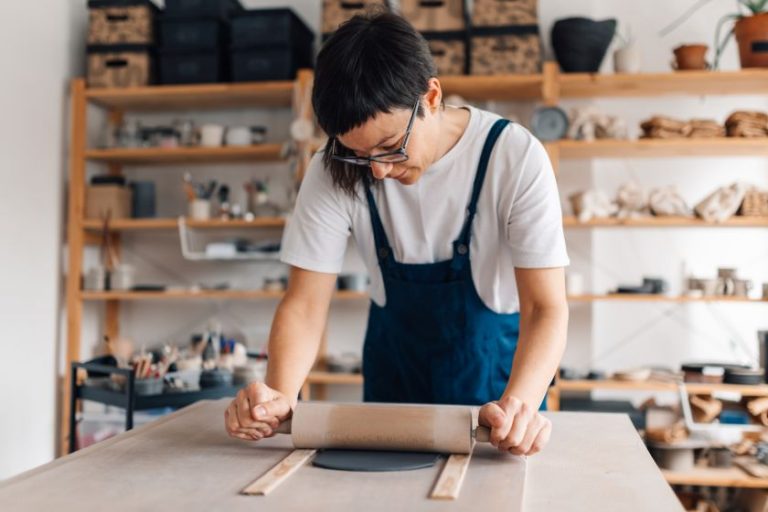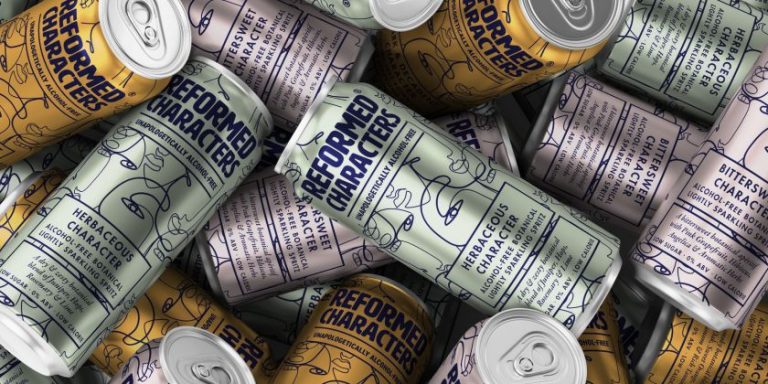Britain’s only working paper mill is now selling directly to designers. After spending a day there, I’d reckon that’s an opportunity every creative should take advantage of.
Recently, I needed to source high-quality coloured paper for a new Creative Boom project around printed posters. I’d heard brilliant things about James Cropper, a market leader in advanced materials, paper and packaging, from a number of artists, designers and small business owners I’ve met over the years.
But how do you really know something’s “high quality”? Well, one of the perks of journalism is that I can go and see for myself. Smart, eh?
And what I discovered… well, frankly, it blew me away. So I couldn’t wait to come back and tell you all about it.
Why I was smitten
There’s something quite magical about standing in the heart of the Lake District, watching paper being born. And not just any paper; coloured paper that’s been perfected over almost 180 years by the only mill in Britain that still makes it.
I’d arrived at James Cropper in the beautiful Cumbrian village of Burneside, and honestly, I was smitten. This company has been innovating with paper since 1845; can you imagine? When I think about my own family’s connection to manufacturing, it gives me goosebumps.
My own great-grandmother, for instance, worked in a factory in Stoke-on-Trent. During my time off between uni, I worked there too. And I think there’s something profound about these places that circle entire lives and families, creating tight-knit relationships where people genuinely care about what they do.
Wandering through James Cropper, I got that same feeling. This isn’t just a workplace: it’s a community. Generations of families have worked here, and everyone has a story to tell.
Of course, I couldn’t help myself; I started digging for gossip about who was the messiest worker and who caused the most mayhem at the Christmas party. But overall, what struck me was the genuine pride radiating from everyone; from the mill floor where earplugs and safety goggles are essential, right through to the marketing office and colour lab.
Ultimately, these aren’t just employees; they’re custodians of an age-old craft.
Decades of experience
Remember, this is the only paper mill in Britain that produces premium-quality coloured paper. The only one. And they’re not just surviving; they’re thriving, selling into over 50 countries with a global team leading in design, colour, and environmental sustainability.
In the colour lab, I watched Mark and Allison (who between them have clocked up 46 years at the mill) work their magic. Mark chatted about colour-matching everything from a brick from the Waldorf Hotel to a £50 lipstick. He explained how greys are the trickiest hues to match, because they exist in such a small colour space, always threatening to shift from green to red or lighter to darker. This level of skill and knowledge is extraordinary to witness… and invaluable if you’re looking to source true quality.
My personal highlight, though, was when they walked me through making my own sheet of paper. Standing there with the coloured stock, adding it to water, then watching it drain through the wire mesh as the fibres locked together, felt like witnessing magic.
There’s something deeply satisfying about creating something tangible from raw materials, especially when those materials and techniques have been perfected over decades.
Direct to the public
And here’s where it gets really exciting for creatives. Because James Cropper has just launched Coloursource: a range of 50 signature shades that represent 50 years of colour development.
Each is available in eight different weights with 36 embossed patterns, and—this is the big news—they’re now selling directly to designers, as well as through stockists.
No more hunting around for that perfect shade or settling for second best. Now you can go straight to the source. And what a source…
Why this matters
Walking through this mill, seeing the River Kent flow right through the site, watching those massive heated cylinders transform wet pulp into beautiful paper, I felt genuinely proud. This is world-class manufacturing happening in Britain, by British people, using British water and British expertise.
In a world where we’re increasingly disconnected from how things are made, James Cropper offers something precious: transparency, quality, and genuine craft.
The team would genuinely like you to visit as well. They’re eager to show you how it’s done, work alongside you to achieve the exact colour you need, and share nearly two centuries of expertise.
In fact, what struck me most about the people here was their willingness to collaborate with creatives. If you’ve got a challenging brief—say you need to match a specific Pantone under different lighting conditions, or you need paper that won’t transfer colour in the rain (crucial, say, for poppy paper)—they want to work with you to solve it. It’s the kind of thing that gets them truly enthused.
For instance, Mark told me about lightfastness testing, where they expose samples to sunlight with half the sheet covered. The difference is dramatic, and it’s exactly why they need to understand how your finished piece will be used.
Will it sit in a shop window? Be displayed under UV lighting? Each application requires different considerations, and they have the expertise to guide you through every decision.
More than just paper
I should hasten to add that James Cropper isn’t just about traditional paper. They’re also pushing boundaries with advanced materials, working on everything from hydrogen fuel cells to packaging solutions that replace single-use plastics.
For instance, their FibreBlend technology transforms waste—including used coffee cups and jeans—into beautiful, fully recyclable paper and packaging.
This is a company that understands the future while respecting its past. They’ve got one foot firmly planted in nearly two centuries of papermaking tradition, and the other stepping boldly into innovation.
Plus, more broadly, James Cropper isn’t just offering you products. They’re offering partnership, expertise, and a genuine commitment to helping you create something extraordinary. And in a world of anonymous supply chains, that’s pretty special.
Give them a call
So to every creative reading this, here’s my challenge. Next time you need coloured paper, don’t automatically reach for the cheapest suspects. Consider the last mill standing; the colour masters who’ve been perfecting their craft since 1845. Give them a call, arrange a visit, and see what proper British papermaking is all about.
Trust me, you’ll never look at paper the same way again. And neither will your clients.










